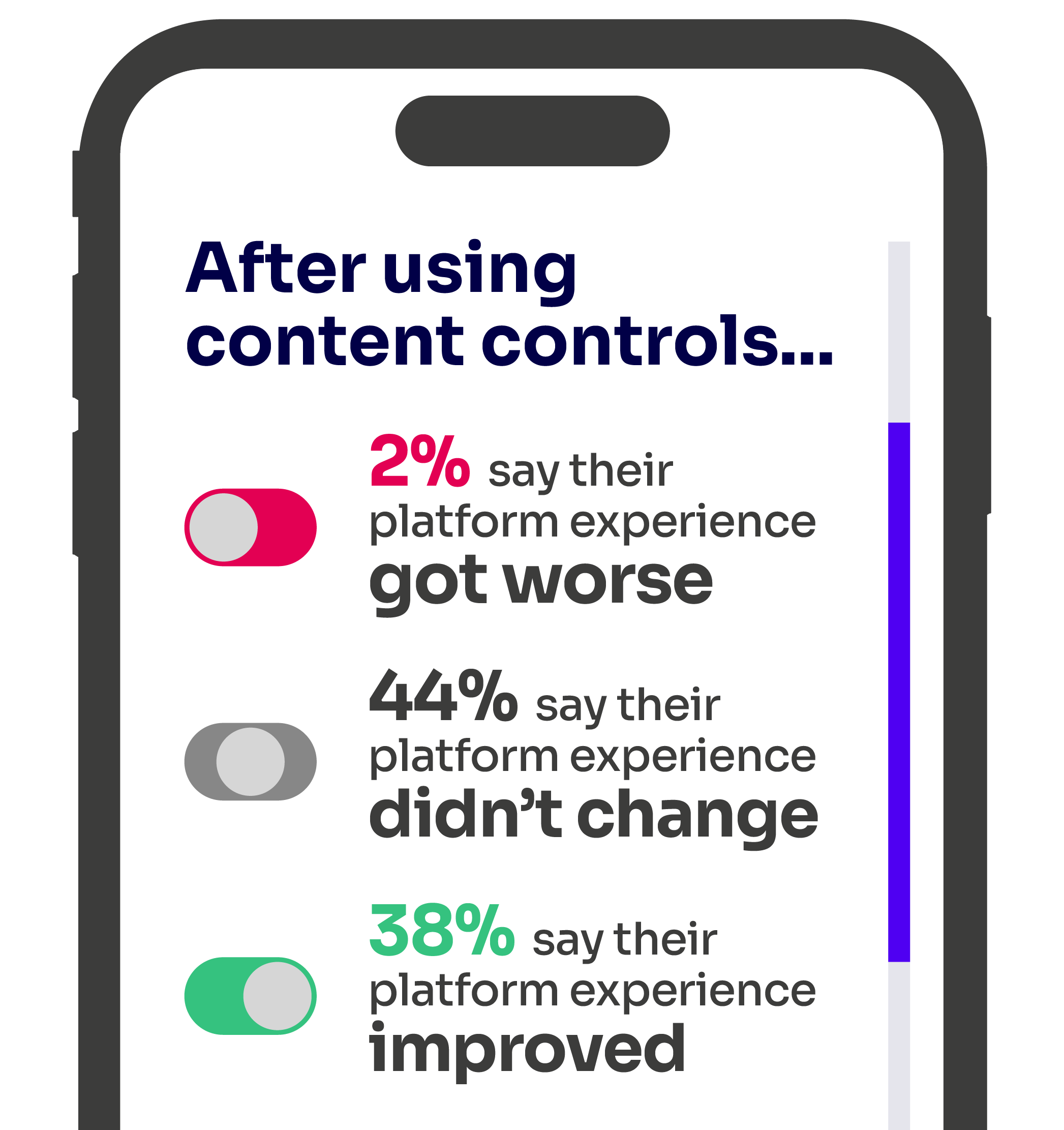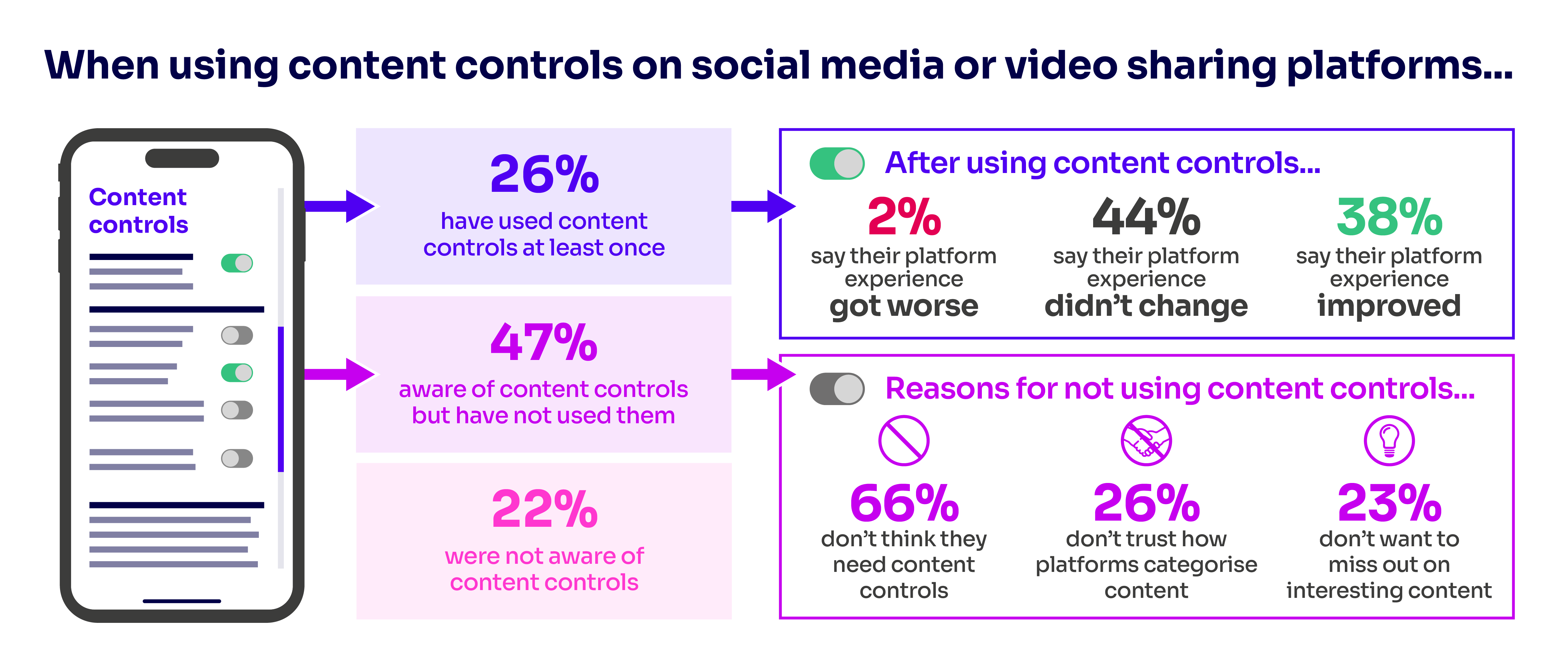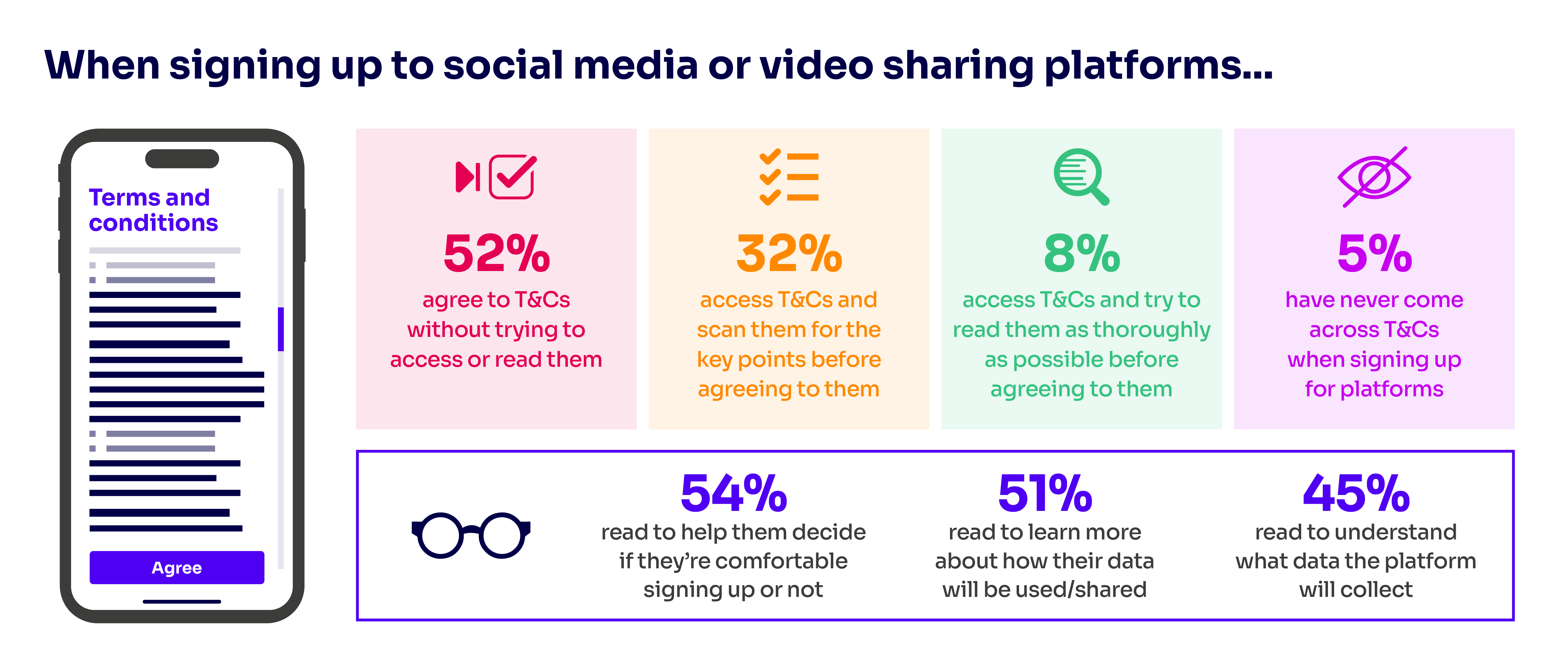
Almost half of social media users who used content controls said their experience did not change, while some said it got worse (2%). Only 38% said using content controls improved their online experience.

Enabling people to take control of their online experiences is central to media literacy and online safety. Social media and video-sharing platforms have content controls that allow users to select the content they see. New research from Ofcom’s Behavioural Insight and Research and Intelligence teams, as part of our work on media literacy, sheds light on people’s experiences.
About a quarter of users (26%) said they have used content controls at least once. Of these, the main reasons were:
- aligning content with interests and preferences (36%)
- protecting themselves from seeing upsetting or harmful content (35%)
- having seen something harmful or upsetting (21%)
Nevertheless, after using content controls, only 38% said their experience improved, while 44% said their experience didn’t change, 2% said it got worse and 16% said they didn’t know.
What are content controls?
In this research, we considered content controls to be personalised settings provided by social media and video-sharing platforms.
These controls enable users to manage the content they see online and avoid encountering harmful or upsetting content.

Reasons for not using content controls
Around one in five users (22%) said they were unaware of content controls prior to taking part in the survey. Almost half of users (47%) said they are aware of content controls but have never used them.
The main reasons users reported for not using content controls were:
- being happy with the content they are seeing on the platforms (68%)
- they didn’t think they need them (66%)
- they don’t trust how the platforms categorise the content (26%)
- they don’t have time (26%)
- they don’t want to miss out on interesting content (23%)
Other reasons included finding the controls too complex to understand (14%), too much text to read (14%) and not being able to find them (10%).
Upcoming call for evidence on online safety
We are looking to expand our evidence base on content controls as part of our work on online safety. We want stakeholders to respond to our upcoming Call for Evidence: Third phase of online safety regulation: Additional duties for categorised services, which will be published in March 2024.
Users’ experiences with terms and conditions
We also explored users’ experiences with terms and conditions (T&Cs) on social media services and video-sharing platforms. Previous research shows many users of online platforms do not engage with T&Cs (PDF, 7.2 MB), so we wanted to understand the reasons behind this lack of engagement.
Accessing T&Cs at sign-up

- A third of users of online platforms said they scan T&Cs for key points and 8% make an effort to read T&Cs fully before agreeing to them.
- However, just over half of users (52%) said they tend to ignore T&Cs when signing up because they think they will take too long to read (65%) or find them overwhelming (45%).
The reasons people gave for accessing T&Cs while signing up to a platform were to help them decide if they were comfortable signing up to a platform (54%), to learn more about how their data will be used (51%), or to understand what data will be collected (45%).
Checking platform rules about what can be posted
We were specifically interested in levels of engagement with the rules on what can be posted on social media and video-sharing platforms.
- More than one in three users (38%) said they never check the rules about what can be posted on their most frequently used social media or video-sharing platforms.
The main reason for not checking platform rules was because users were confident they were not going to do anything that broke the rules (57% of respondents).
However, two-thirds (66%) of people said they check the rules at some point while using a platform – for example when they see content they are unsure of (23%) or when they are prompted to (19%). The main reasons people gave for rule-checking were because they thought it was important to use social media in a responsible way (27%) or to make sure they didn’t break any rules (26%).
